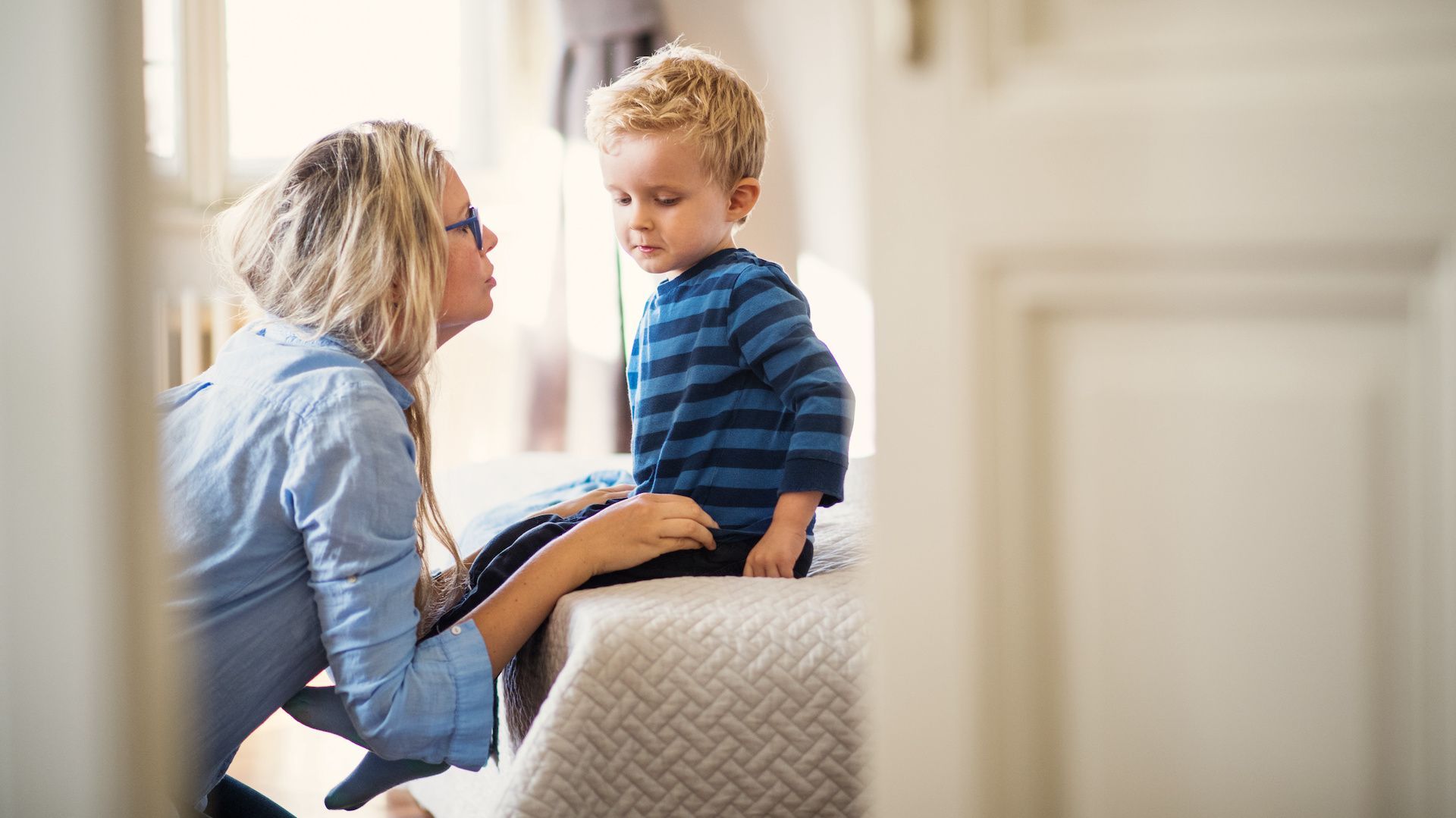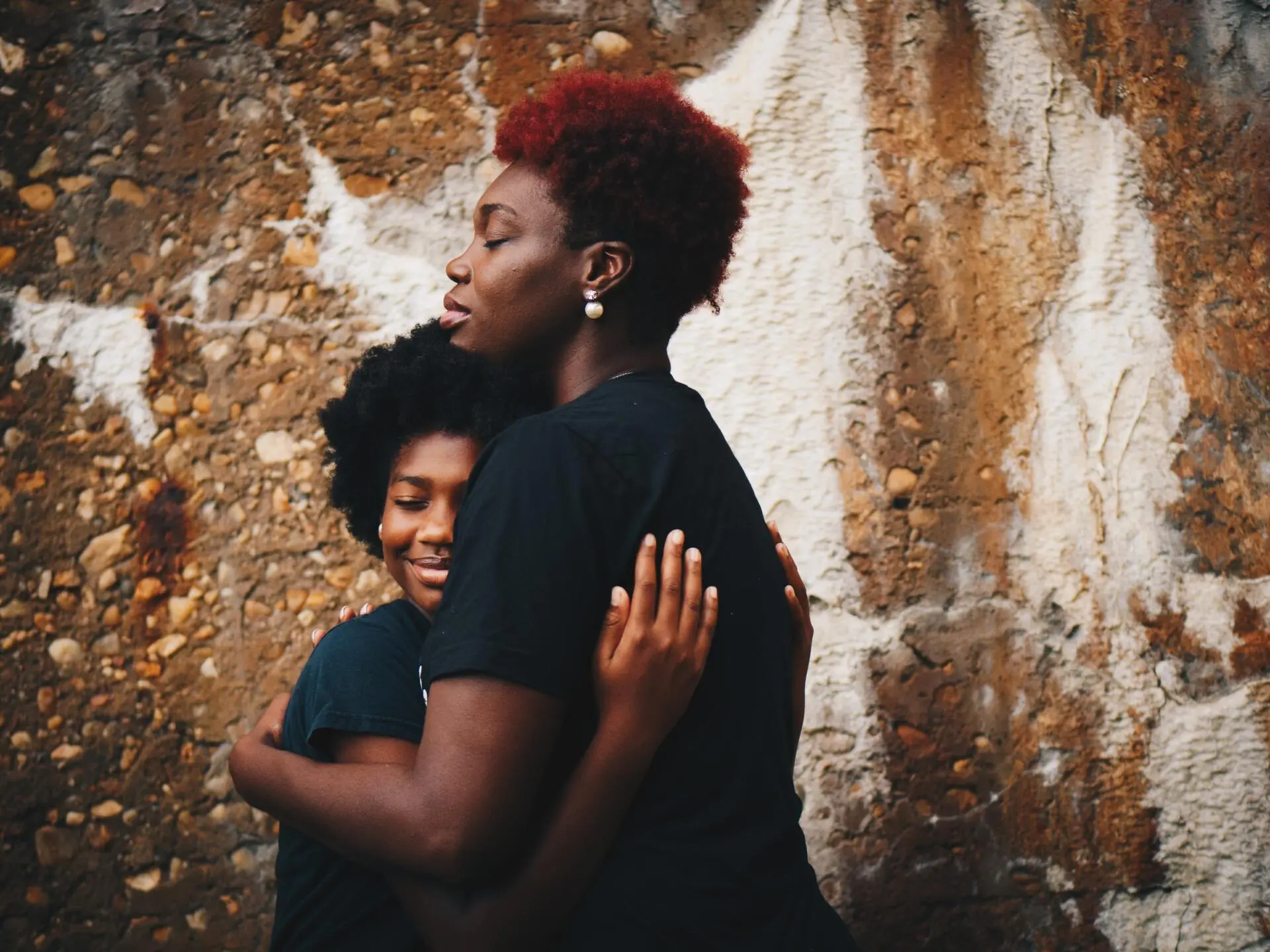Nonviolent Communication & Emotional Intelligence

How Nonviolent Communication Fosters Emotional Intelligence in Kids
When Charlotte was six, she once told me in the heat of an argument, “I wish I lived in a different house.” My chest clenched. I remember my first instinct was to say something like, “Well, that’s not a very nice thing to say.” But instead, I paused. I took a breath. And I asked, “Are you feeling really overwhelmed and needing space right now?”
Tears welled up in her eyes. “Yes,” she whispered. That moment changed something in both of us. It wasn’t about the conflict anymore; it was about connection. That’s the power of Nonviolent Communication (NVC). When we pause to understand rather than react, we model the very emotional intelligence we hope our children will carry into the world.
As parents, we have a strong desire for our children to be happy. We also want them to grow into successful and fulfilled people with strong relationships. And we hope that they will be compassionate, kind, and caring.
All of these things relate to our children’s level of Emotional Intelligence or EQ. Emotional Intelligence became a popular term after Daniel Goleman’s book, Emotional Intelligence: Why it Can Matter More than IQ, discussing research that concluded people with high EQs outpace their peers with high IQs.
However, what Emotional Intelligence actually means, how it relates to happiness, fulfillment, and compassion, and how to instill it in our children, isn’t as well known. We can be left wondering if EQ is innate or cultivated. And if it can be cultivated, how do we do that?
Luckily, there is a
key to cultivating emotional intelligence in children – practicing Non-Violent Communication (NVC) with them. Nonviolent Communication is a powerful communication framework developed by Marshall Rosenberg that has helped people become more successful in their careers and relationships.
What Is Emotional Intelligence?
Emotional intelligence is the ability to recognize, understand, and manage our own emotions, and to recognize, understand, and influence the emotions of others. Psychologist Daniel Goleman identifies five key components:
- Self-awareness – the ability to understand our emotions well enough to know what we feel and how our feelings impact our behavior.
- Self-regulation – the ability to simultaneously feel and manage our emotions and consciously choose our actions.
- Motivation – directing our emotions toward our parenting goals and/or values.
- Empathy – the dedication to understanding and having compassion for others’ emotions and experiences.
- Social skills – the ability to build meaningful connections and effectively navigate relationships.
At Jai, we believe that emotional intelligence isn't just a skill; it's a way of relating. It’s how children build lifelong inner resilience, and it begins with how they’re related to in the first place. That’s where Nonviolent Communication becomes essential.
In Nonviolent Communication: A Language of Life, Marshall Rosenberg writes:
“What I want in my life is compassion, a flow between myself and others based on a mutual giving from the heart.”
This “mutual giving” is what builds a child’s (and our’s for that matter!) capacity for empathy, accountability, and self-expression — not punishment, control, or shame.
The Connection Between NVC & Emotional Growth
Nonviolent Communication, as developed by Dr. Rosenberg, is more than a framework for conflict resolution; it’s a transformative way of being. At its heart, NVC invites us to see all behavior as an attempt to meet a need. This single idea reframes everything.
In a traditional parenting model, when a child yells or lies, we focus on stopping the behavior. But with Nonviolent Communication, we ask: “What need is the child trying to meet?”
Let’s say Charlotte, at age nine, refused to get in the car one morning. I felt the usual urgency rise; I had a meeting to get to. But instead of coercing or bribing, I remembered the four steps of Nonviolent Communication:
- Observation:
“I notice you’re not putting on your shoes.”
- Feeling:
“I’m feeling rushed and a little anxious.”
- Need:
“I need some cooperation so we can leave on time.”
- Request:
“Would you be willing to tell me what’s going on for you?”
What followed was a moment of truth: “I don’t want to go to school today. I feel dumb in math.” Her resistance wasn’t about defiance; it was about fear.
That day, I didn’t just get my child into the car; I got into her heart.
In the Jai curriculum, we refer to this as moving from behaviorism to connection, shifting from punishment and reward to curiosity and understanding. We ask, "What is the ROOT beneath the behavior’s BLOOM?" The answer is almost always a feeling + an unmet need.
Research in neuroscience shows that empathy and attunement light up the brain’s social engagement system, increasing oxytocin and lowering cortisol. In other words, connection literally calms the nervous system. Nonviolent Communication helps parents become co-regulators, not enforcers, which is what children truly need to develop emotional intelligence.
NVC Techniques for Building Empathy in Children
One of the greatest gifts we can give our children is the capacity for empathy. But empathy isn’t taught, it’s modeled. When we offer empathy consistently, it becomes part of their internal script.
Here are key NVC-based techniques that promote empathy:
1. Reflecting Feelings and Needs
When your child is upset, instead of correcting or fixing, reflect their inner world:
“You’re feeling disappointed because you were really hoping to play longer.”
This simple mirroring builds emotional vocabulary and teaches kids to link feelings to unmet needs.
In our curriculum, we share our FEEL framework:
- F: Focus on the physical sensation
- E: Embrace the moment as a teacher
- E: Expand into feeling words
- L: Label the need
This can help you AND your child come back to self-regulation and connection, again and again.
2. Modeling Self-Empathy
In Nonviolent Communication, Rosenberg reminds us, “Self-empathy in NVC is a deep and compassionate awareness of our own inner experience.”
At the Jai Institute for Parenting, we understand that the cornerstone of empowered parenting isn't just how we treat our children; it extends into how we treat ourselves when things don’t go as we intended. Self-empathy is the act of turning toward ourselves with the same compassion we long to offer our children.
Let me take you into a moment from my own life.
Charlotte was about eleven. She was exhausted and had just snapped at me for reminding her (for the third time) to put her dishes in the dishwasher. I felt it — my chest tightened, heat surged into my face, and the old script in my head began:
“She is being so disrespectful. Doesn’t she care?”
For a moment, I was about to react.
But I paused. I placed my hand on my heart, a Jai anchoring technique we call a sensory calming tool, and took a breath. Then I said, “I’m feeling really overwhelmed right now, and I need a moment to calm down.”
What I didn’t say was just as important as what I did say. I didn’t shame her. I didn’t make her behavior about me. I modeled something else entirely: that I could hold space for my own experience without collapsing into reactivity or blame.
When our kids see us stumble, pause, reflect, and return with love, they learn something radical: that they don’t have to be perfect to be worthy of connection.
They learn that emotional messiness isn’t dangerous, it’s reparable. And that’s what builds emotional safety in the home.
Self-empathy is the ground from which all other forms of empathy grow. Without it, we risk parenting from depletion, reactivity, or performative perfectionism. With it, we become rooted and resilient.
3. Normalizing All Feelings, Not All Behavior
At Jai, we teach a core truth:
all feelings are valid, even if all behavior is not.
This is one of the most powerful shifts a parent can make, and it echoes Dr. Rosenberg’s guidance that our feelings are not wrong or shameful; they are messengers of unmet needs.
Let’s say your child throws a toy in frustration. Our cultural conditioning might prompt us to scold or punish. But through the lens of NVC, we do something else.
We pause. We soften. We connect.
We might say:
“It’s okay to feel angry. It’s not okay to throw the toy. Can you show me with your words what you’re feeling instead?”
This distinction between accepting emotion and setting boundaries around action creates a home where feelings aren’t feared or repressed. Instead, they are welcomed, explored, and channeled.
Dr. Rosenberg writes:
“Judgments of others contribute to self-fulfilling prophecies. By expressing our vulnerability instead of our judgments, we are more likely to inspire compassion.”
When a child feels judged for having a big emotion, they either suppress it or act it out. But when we validate their internal world, without condoning harmful behavior, we help them develop the capacity for emotional regulation.
This is also supported by Jai’s FEEL framework:
- Focus on the physical sensation
- Embrace the moment as a teacher
- Expand into feeling words
- Label the need
This internal naming builds neural pathways of awareness and resilience. It teaches children that their emotions are not dangerous; they are information. And when that becomes the norm, children no longer fear their own emotional world.
They trust it.
4. Replacing Praise with Empathic Acknowledgment
In modern parenting conversations, “praise” often gets a bad reputation. And while it’s true that
constant evaluative praise like
“You’re so smart” or “You’re such a good kid” can create a dependence on external validation, we also believe that our children
deserve to be celebrated.
The real question isn’t whether we should praise our kids. It’s how we do it, and whether our praise supports their sense of intrinsic worth and self-direction.
When Charlotte was little, I remember her holding up a drawing she’d worked on for nearly an hour. She looked at me with wide eyes, waiting for a reaction. I beamed and said, “Wow! You worked so hard on this. I love the colors you chose. Great job, sweetheart.”
She lit up, not because I said “great job,” but because I saw her. Because my words were connected to her effort, her creativity, and our relationship.
This is the distinction we make at Jai: not all praise is created equal.
Dr. Marshall Rosenberg pointed out that praise that focuses solely on judgment, whether positive or negative, can inadvertently teach children to perform for approval. But that doesn’t mean we eliminate praise altogether. Rather, we expand it into something richer and more connected.
Here’s how we frame it:
- Empathic acknowledgment centers the child’s experience.
- Process-focused praise highlights effort, intention, and persistence.
- Celebratory connection communicates joy and love without conditions.
Some examples:
- “Great job sticking with that even when it got hard!”
- “You really lit up when you finished that puzzle. I could tell it meant a lot to you.”
- “I’m proud of you, and I can see you’re proud of yourself too.”
This balanced approach allows us to cheer our children on without accidentally making our approval the center of their self-worth. It bridges the gap between nurturing confidence and encouraging autonomy.
At Jai, we hold the belief that relational safety is the container through which all learning happens, including learning how to trust oneself. When praise is delivered within a relationship rooted in empathy, mutual respect, and emotional attunement, it becomes a tool for connection, not control.
And let’s be honest, when your kid nails their violin recital or reads their first book out loud or makes a heartfelt apology to their sibling, it’s okay, beautiful even, to say, “I’m so proud of you. Great job.”
Because at that moment, what we’re really saying is:
I see you. I love who you are. And I’m here with you every step of the way.
How NVC Encourages Self-Expression in Kids
When we model NVC, we show children how to express themselves clearly, respectfully, and powerfully. Here’s how it unfolds:
Step 1: Creating Safety First
Children can’t access expressive language unless they feel emotionally safe. That’s why the first step of any empowered conversation is connection. At Jai, we teach the PEACE Process:
- Presence: Regulate your own nervous system first.
- Empathy: Connect to their experience.
- Acknowledge: Reflect what’s true.
- Conscious Communication: Speak with clarity and care.
- Explore Solutions: Collaborate from a grounded space.
This sequence isn't just for adults; it can be taught to children through modeling and role-play.
Step 2: Building a Feelings Vocabulary
A child can’t say “I feel discouraged” if they don’t know the word exists. In our home, we made “feelings charts” part of the fridge decor.
Giving children language to describe their inner world is like giving them a compass in an emotional storm. When they can name what they’re feeling, they begin to understand that their emotions aren’t “too much”, they’re just signals, pointing to something that matters.
Dr. Rosenberg emphasized that feelings are essential messengers and should be clearly differentiated from thoughts and interpretations.
That’s why, at Jai, we support families in moving beyond vague statements like “I feel bad” into more specific, embodied language: frustrated, nervous, left out, hopeful, proud. This precision builds both self-awareness and empathy.
Over time, that vocabulary becomes internalized. Instead of acting out when they're sad, children can say, “I’m feeling left out because I wanted to play too.”
And for us as parents, it’s a way to meet our children with attuned presence rather than assumption. Because the more they can name, the more they can process. And the more we can respond, not react, with love.
Step 3: Supporting Requests, Not Demands
One of the most empowering moments in a child's development is realizing they can ask for what they need. Whether it’s more playtime, alone time, or a hug, NVC helps them shape their needs into clear, respectful requests.
When Charlotte was about ten, she once said, “I need some quiet right now. Can you ask Myles to turn his music down?”
She didn’t scream, she didn’t whine, she used her voice. That’s not just “good behavior”. That’s self-respect in action.
Step 4: Honoring Their “No”
If we want our children to honor our boundaries, we must model honoring theirs. That includes making space for their “no,” and not seeing it as defiance but as autonomy.
When a child says “no,” they’re practicing self-expression. When we listen, we teach them that their voice matters.
As Rosenberg writes:
“The more faithfully you listen to the voice within you, the better you will hear what is sounding outside. And only then can you begin to know the true needs of others.”
Closing Reflections: Why NVC and Emotional Intelligence Matter Now More Than Ever
In today’s world, where anxiety, disconnection, and divisiveness are on the rise, emotional intelligence isn’t a luxury. It’s a necessity. And it starts at home.
Non-Violent Communication (NVC) is a transformative tool for fostering emotional intelligence in children. By teaching children to observe their feelings without judgment, express their needs respectfully, and engage empathetically with others, NVC provides a strong foundation for emotional growth and strong social skills.
Nonviolent Communication gives us a way to break cycles of reactivity and repression. It teaches us, and our children, that all behavior is communication. That every meltdown, every outburst, every shut door is really a doorway, if we choose to walk through it with curiosity and compassion.
Today, with Myles and Charlotte thriving as young adults in college, I don’t wonder whether they’ll succeed. I wonder how they’ll show up in the world, because I’ve watched them grow into people who listen deeply, express authentically, and stay connected to their values.
And that, to me, is the greatest success of all.
Want to begin using NVC in your own home?
Our free module,
The Science of Staying Calm, offers practical tools to support nervous system regulation and communication. Because we can’t teach our kids what we haven’t yet learned to embody. Begin with yourself. Your kids will follow.
Meet Your Author, Kiva Schuler
Jai Founder and CEO
Kiva’s passion for parenting stemmed from her own childhood experiences of neglect and trauma. Like many of her generation, she had a front row seat to witnessing what she did not want for her own children. And in many ways, Jai is the fulfillment of a promise that she made to herself when she was 16 years old… that when she had children of her own, she would learn to parent them with compassion, consistency and communication.
Kiva is a serial entrepreneur, and has been the marketer behind many transformational brands. Passionate about bringing authenticity and integrity to marketing and sales, she’s a sought after mentor, speaker and coach.
Share This Article:
Curious for more?














